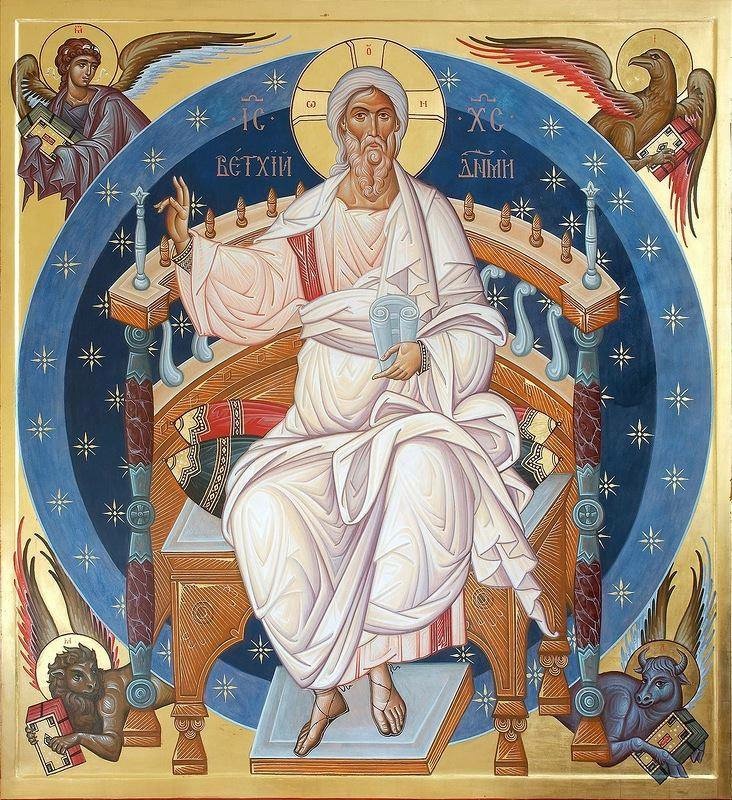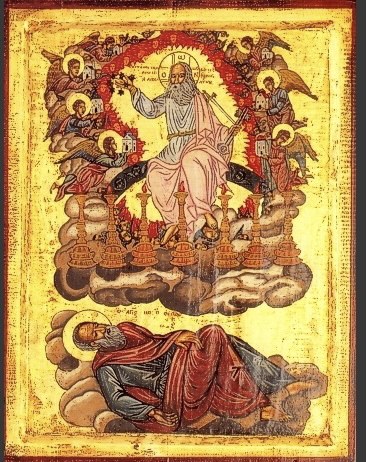
“In his right hand he held seven stars, and coming out of his mouth was a sharp, double-edged sword. His face was like the sun shining in all its brilliance.” (Apoc. 1:16)
St. John describes his initial vision of Christ in the Apocalypse in terms very similar to the description of Christ at the Transfiguration in the Gospels of Matthew, Mark, and Luke. Christ is shining more brilliant than the sun, in clothes more brilliantly white than possible on earth. The transfiguration itself is commonly associated with the End, the final Judgement and the revelation of the saints and righteous who will also shine more brilliantly than the sun. This “theosis” or “divinization” is also the common term for Greek-speaking Christians to describe salvation itself: by cooperation with God, the human person becomes like God and comes to share certain divine attributes–primarily love-charity. This assimilation of human to divinity is described in 2 Peter 1:4: “… that you may be partakers of the divine nature, having escaped the corruption that is in the world through lust.”
The seven stars in Christ’s hand are commonly seen painted–many times over!–on the ceilings of churches. These stars are not meant to be stars in the sky, as if the roof were invisible, but are artistic shorthand for painting the saints in the Kingdom of Heaven. Rather than painting a multitude of faces, the church is adorned with a multitude of stars just as the righteous are commonly described as stars in visionary literature.
The sword which is the word of God (Isaiah 49, Wisdom 18, Hebrews 4) is both text and person. The “word of God” in English is commonly understood to be text, the word(s) spoken by God while the “Word” of God is understood to be the Divine Person who was incarnate. These distinctions of upper-case and lower-case are all editorial choices based on the theological opinions of the editors or typesetters. But in the Greek manuscripts there were few–if any–distinctions between upper-case and lower-case letters so that each time the phrase “word of God” appears it would have been understood to be BOTH the text spoken and the Divine Person who was made flesh.

